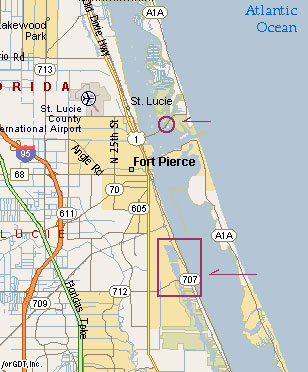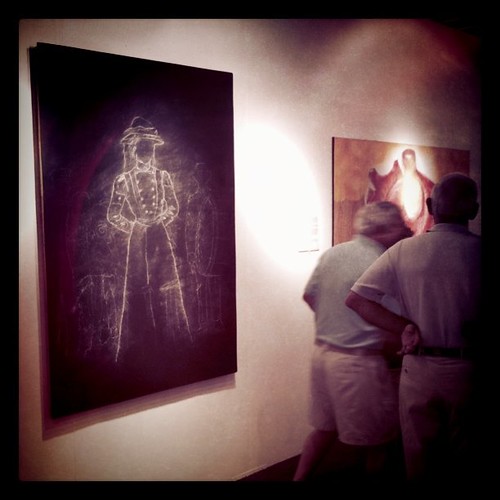House With Dirt Yard
Tucson, AZ“I’ve been running the same desert streets up here where I live for twelve years. I love running at night and getting lost, winding my way through the roads until I don’t even know where I am. Sometimes, the only way I can find my way home is by following the mountain.
In the part of town where I run, most of the houses sit on 2 acre lots. As in most places in Tucson, the yards are hard packed dirt. There is no grass. No pretense of taming or changing the land. Just dirt. Sometimes the dirt is lined with rocks. Sometimes a cactus or desert tree grows out of the dirt. But the dominating feature of these yards is dirt and only dirt.
I’ve always been intrigued by the way these houses look at night, the way small signs of domestic life glow faintly in a sea of darkness and dirt. The flicker of a television, the sulfur yellow of a single lamp, or a tiny rectangle of light from a bathroom window are the only things that indicate people actually live behind these walls. The domestic space seems so isolated, fragile and removed from the landscape that encroaches on it. The night pushes right up to the doors and windows. The little smears and the people they represent seem so small compared to the immensity of the desert and the night sky.
The houses seem to me like snapshots from a film. A million stories run through my head as I run past them in the night. Sometimes the blurred light behind windows seems to sigh when I pass. Other times, the windows are as dark as the dirt yards as if all life has been extinguished.
There are no streetlights in Tucson, so when the dark sets in, it is very dark. The dirt yards merge with the night, blend right into the surrounding desert and dissolve into nothingness. The houses are isolated fortresses in this unforgiving landscape. Dirt pushes right against their walls.
People keep their dirt tidy. They rake their dirt, sweep their dirt, take leaf blowers to it. They spend their weekend afternoons tending to their dirt.
Tucson sits on a giant colony of termites that migrate from deep under the dirt and into the walls of houses. Somewhere under the hard surface of the desert, a giant Queen Termite sends her minions into houses to bring the walls down.
The little islands of domestic space we carve out of this landscape seem so ill-placed. I’ve observed these houses with their dirt yards for years, thinking that somehow they represent the tenuous hold all of us have on the planet. In the end, the TVs and the table lamps might still be standing, but we will all go back to dirt one way or another.
When I learned about a call for artists on the subject of Dirt from my friend Jide, my years of running through the desert at night and contemplating dirt yards all came together for me. So I’m going to put together a set of photos on dirt yards at night and try to figure out exactly what it is I have to say about them.
I’m only going to shoot houses from the streets where I run on. These are the places that I have woven into my personal geography and the way I occupy the Tucson landscape. These roads are like arteries in my life. Running through them gives me a physical hold on the planet. Looking through windows and watching these houses at night as I run through the streets has played a huge role in how I have come to relate to my own existence.
This is where I live now. I live in a place where yards are made of dirt. A place where I run at night and the dirt yards, the landscape of the desert and the night sky all bleed together into a blanket stillness. It makes my heart feel both completely alive and completely at rest, even when my feet are flying as fast as they can go.
I’m really inspired about this project. It feels really personal, really significant and makes me very happy. That’s a good thing”
Walking The River Making Art
“Walking The River Making Art”
[Postponed due to infrastructure damage at Jack Island Preserve.]
Despite its ubiquity in the everyday walking is an activity obscured by its own practical functionality. It is employed literally and understood metaphorically as a slow, inefficient, and increasingly anachronistic means to a predetermined end. Rarely is walking considered as a distinct mode of acting, knowing, and making. As its necessity diminishes and its applications rarefy, the potential of walking as critical, creative, and subversive tool appears only to grow. Conceived of as a conversation between the body and the world, walking becomes a reciprocal and simultaneous act of both interpretation and manipulation; an embodied and active way of shaping and being shaped that operates on a scale and at a pace embedded in something seemingly more authentic and real.
Using the walk as a guiding metaphor “Walking The River Making Art” is a multifaceted effort that seeks to nurture both a theoretical and applied approach to knowing and interpreting place as we experience and construct it through walking.
A Guided tour of the Savannas, the Indian River Lagoon, and other “land art” significant landmarks, will be organized between July and August, 2011. (Travel date will be finalized by 15 July, 2011.) Arrangements will be for a maximum of four (4) persons per tour. Tours are one day, arriving on site by 9:00 a.m., and returning by sundown. Contact me via the comment form below, or the contact page for costs and additional questions.
**NOTE: Jack Island Preserve is closed pending construction of a replacement bridge to the island. Information current as of 5/31/2011. For latest news, see the Fort Pierce Inlet State Park website.

Savannas Preserve State Park
St. Lucie County, Florida
(in the red rectangular area on the map below)

Indian River Lagoon
N. Hutchinson Island
St. Lucie County, Florida
(photo credits: Onajide Shabaka)

Art Naples – Spanish

Noticias » Centroamérica
Art Naples, nueva feria de arte contemporáneo, fotografía y diseño en Florida
18 de Marzo de 2011 • 11:11
Miami (EE.UU.), 18 mar (EFE) – Más de 1.200 obras de trescientos artistas modernos y contemporáneos se exhibirán a partir de hoy en la feria Art Naples (Naples, Florida), que apuesta en su primera edición por el protagonismo compartido de instalaciones, fotografía, vídeo, escultura y diseño.
La muestra recoge las “nuevas tendencias y la obra de importantes artistas históricos de la década de 1970, así como una sección muy cuidada sobre fotorrealismo”, dijo a Efe Lee Ann, organizadora de la feria, que tiene lugar en el renovado Naples International Pavillion.
Ann Lester, la organizadora, destacó la exhibición “Miami-Wave”, “una selección -dijo- de los mejores artistas promovidos por los más significativos marchantes de Miami” de gran atractivo para la comunidad del sur de Florida, “tan multicultural”.
En esta sección destacan los artistas que exponen en Artlab33 | Art Space, especialmente Onajide Shabaka, y el colombiano Pablo Tamayo (Bogotá, 1972), cuya obra es exhibida por la galería de Miami Bernice Steinbaum.
De Argentina llegan las galerías Adriana Budich (Buenos Aires) y Artis Galería (Córdoba) y, de Bogotá (Colombia), la Galería Baobab.
Los organizadores de la feria, Lee Ann y David Lester, han realizado ya más de 70 citas internacionales de arte en ciudades como Londres, Hong Kong, Nueva York, Chicago o Dallas y, actualmente, organizan también la Feria de Antigüedades y Arte Internacional de Naples. EFE emi/cs/agp

Miami Wave at Art Naples
Art Naples – March 18 – March 21, 2011
“Miami Wave” exhibition with gallery representation by Artlab33 Art Space

April 2010 Re-opening Group Exhibition
Re-opening Group Exhibition
Exhibition Dates: 10 April – 1 May, 2010
Opening: 7 pm – 10:30 pm, Saturday 10 April
What is a re-opening? Artlab33 Art Space has moved to a larger space (one door north) to 2085 NW 2nd Avenue.
Our current exhibition features some of our finest gallery artists, Christopher Skura, Paul Aho, Toyin Odutola, Bill Pusztai, and David Rohn.

“Untitled” © 2008
graphite, ink, colored pencil on paper.
Christopher Skura

Bill Pusztai, © 2008
West: Erotesis
Piezographic on archival paper
24 x 18 in. framed

“Encroaching” © 2010
Ink & Varnish on Board
16 x 20 inches
Toyin Odutola
Weekly Regular Hours: Tue.-Sat. 11-5 p.m. (or by appt.)
Late last Thursday’s every month until 8 p.m.
Open Every Second Saturday’s Wynwood Art Walk until 10:30 p.m.
Onajide Shabaka – Mami Wata
The character of Mami Wata is twofold: she is an ancient and indigenous deity, part of the widespread belief in spirits that live in the waters, but she is most often depicted as an alien creature such as a mermaid. Mami Wata is a fully African spirit.
Mami Wata is often portrayed as a light-skinned maiden with snakes curling around her breasts; the snakes represent supernatural power. As the surface and moods of fresh water and the sea are ever-changing, so are the moods of Mami Wata. She is benevolent as she works to ensure beauty, riches, a big family and a long life to those who honor her, but she also has a dangerous side that capsizes boats, strips away fertile soil and drowns unfortunate victims. This particular image incorporates imagery from colonization and demonstrates the influence of foreign culture on African art, which is organic and constantly evolving. As Africans have been exposed to Western, Islamic and Indian culture and art, the images of Mami Wata have changed over time, yet her personality has remained the same.

“Mami Wata #1”
Lamba print on gatorboard
42 x 60 in.
© Onajide Shabaka

“Mami Wata #2“
Lamba print on gatorboard
42 x 60 in.
© Onajide Shabaka
Bill Pusztai
Bill Pusztai
Embodying the allusive muses, this quartet of classically composed nudes is a statement about statements, art about sex, soft-core porn about literature, and homage to one of the unsung heroes of culture and gender theory.
Sententia: a single, pithy statement of general wisdom.
Metaphor: compares two things by speaking of one in terms of the other.
Synecdoche: a metaphor in which the part stands for the whole.
Erotesis: a rhetorical question not explicitly answered because it is obvious what answer is expected.
paraphrased from:
A Handbook of Rhetorical Devices
by Robert A. HarrisNorthrop Frye proposed using the cardinal directions as an organising principle for thinking about cultural constructs and the myths we live by.
North: Logos, the intelligible world
East: Nous, the universal mind
South: Thanatos, death
West: Nomos, law or tradition.
for more info see:
Northrop Frye’s Writings On the Eighteenth and Nineteenth Centuries
by Northrop Frye, Imre Salusinszky, and Robert D. Denham
Bill Pusztai, © 2008
South: Synechdoche
Piezographic on archival paper
24 x 18 in. framed
Bill Pusztai, © 2008
North: Sententia
Piezographic on archival paper
24 x 18 in. framed
Bill Pusztai, © 2008
East: Metaphor
Piezographic on archival paper
24 x 18 in. framed
Bill Pusztai, © 2008
West: Erotesis
Piezographic on archival paper
24 x 18 in. framed





